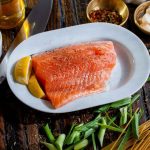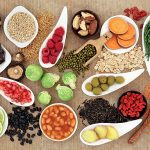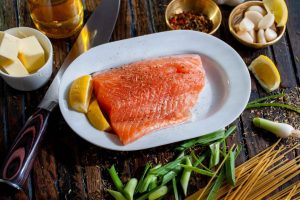Maintaining a balanced diet is vital for overall health and well-being. However, with today’s abundance of food choices, it can be challenging to make informed decisions about what to eat. To navigate this complexity, having an ultimate food guide can provide crucial guidance for making well-rounded and nutritious choices. In this article, we explore the significance of a comprehensive food guide and discuss practical tips for making informed choices that contribute to a balanced diet.
Understanding the Importance of a Food Guide: A food guide serves as a valuable tool for understanding the essential components of a balanced diet. It provides evidence-based recommendations that help individuals meet their nutritional needs, prevent deficiencies, and reduce the risk of chronic diseases. A reliable food guide empowers us to make mindful decisions about our daily dietary intake and fosters a healthy relationship with food.
Key Components of a Balanced Diet: A comprehensive food guide typically emphasizes key components of a balanced diet. These include:
- Fruits and vegetables: Rich in vitamins, minerals, and antioxidants, fruits and vegetables are fundamental for maintaining good health. The guide encourages a diverse range of colorful options to ensure a broad spectrum of nutrients.
- Whole grains: Whole grains provide fiber, B vitamins, and minerals. Incorporating whole grain products such as brown rice, quinoa, and whole wheat bread aids in digestion and promotes sustained energy levels.
- Lean proteins: Protein is essential for building and repairing tissues. The food guide suggests incorporating lean sources of protein, such as chicken, fish, beans, lentils, and tofu, while moderating the intake of red meats.
- Healthy fats: Including sources of healthy fats, such as avocados, nuts, seeds, and olive oil, supports cardiovascular health and brain function. The guide encourages moderation in fat consumption while avoiding unhealthy trans fats.
- Dairy or alternatives: Calcium, essential for strong bones and teeth, can be obtained from dairy products or suitable alternatives like fortified plant-based milk or calcium-fortified tofu.
Making Informed Choices: To make informed choices in line with the food guide’s recommendations, consider the following tips:
- Meal planning: Plan meals in advance to ensure a well-balanced combination of nutrients from various food groups. This approach facilitates healthier eating habits and reduces reliance on less nutritious options.
- Reading nutrition labels: Familiarize yourself with reading and understanding nutrition labels, enabling you to assess the nutritional value of packaged foods. Be mindful of portion sizes and ingredients, particularly added sugars, sodium, and unhealthy fats.
- Cooking at home: Prepare meals at home whenever possible, as this allows greater control over ingredient quality, portion sizes, and cooking methods. Experimenting with herbs and spices adds flavor without unnecessary additives.
- Moderation and portion control: Enjoy a varied diet, including your favorite foods, but remember to practice moderation and be mindful of portion sizes. Balancing indulgences with nutrient-rich choices helps maintain a well-rounded diet.
- Seeking professional advice: Consult a registered dietitian or nutritionist for tailored guidance based on your specific dietary needs and health goals. They can provide personalized strategies to navigate challenges and optimize your nutritional intake.
Your ultimate food guide is a valuable resource that empowers you to make informed choices for a balanced diet. By understanding the key components of a nutritious eating plan, practicing portion control, and seeking professional advice when needed, you can enjoy a wholesome diet that supports your overall well-being. Embrace the knowledge provided by your food guide and make conscious decisions that prioritize your health and long-term vitality.















Add Comment